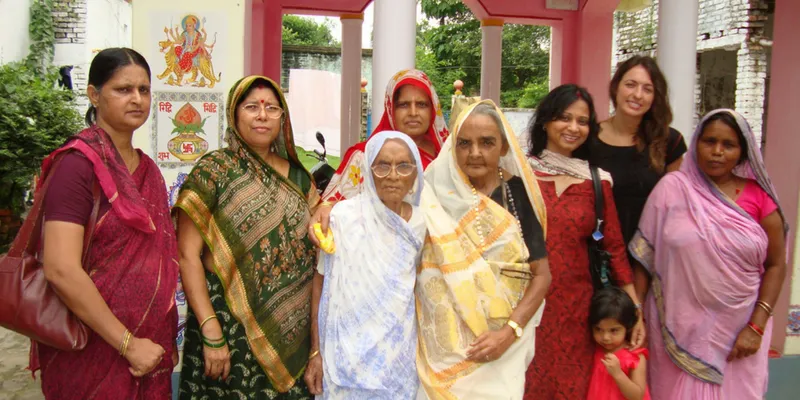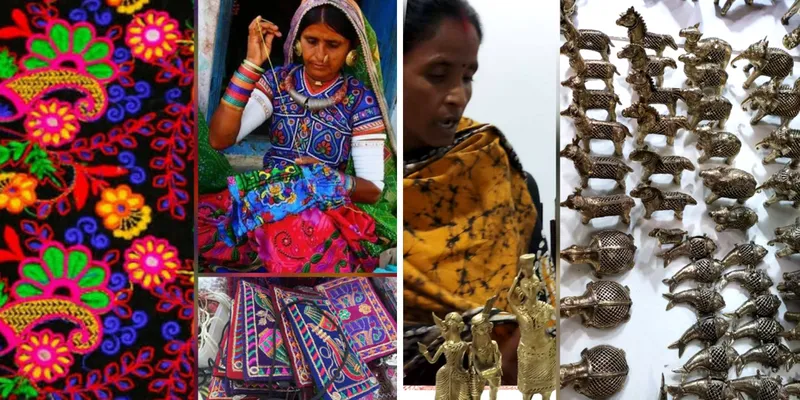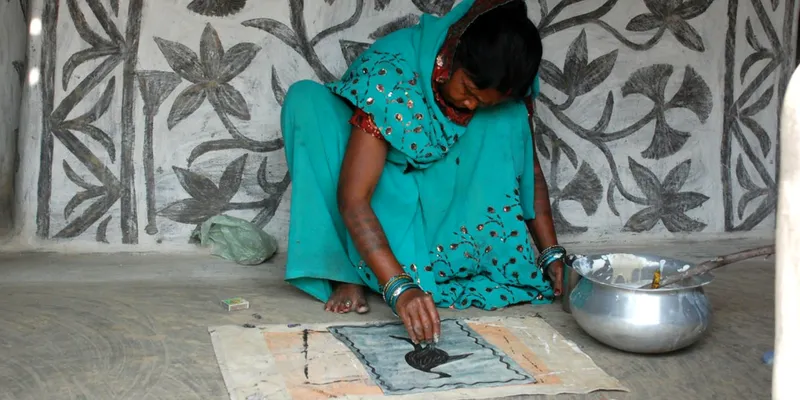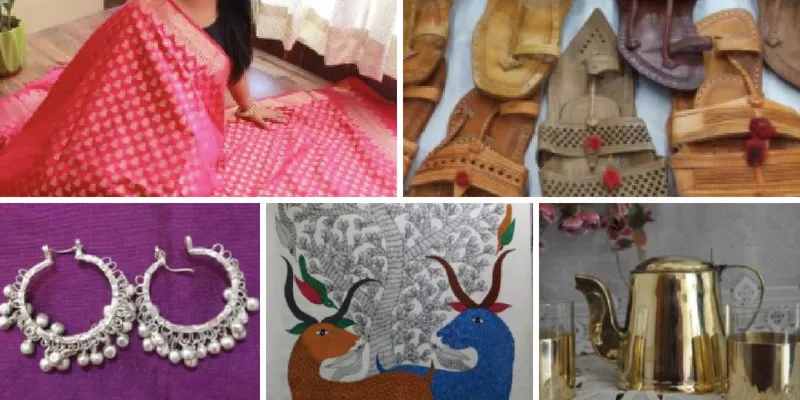This former IBM employee is on a mission to revive Madhubani art and empower rural artisans
NIT-Kurukshetra graduate Ihitashri Shandilya set up MITHILAsmita to help artists evolve into cultural entrepreneurs by providing them with a platform to showcase their work.

Deep in the rural interiors of India, the women folk in Mithianchal, in northern Bihar, practise an art form that not only captures the legends and mythology of ancient culture, but also reflects the amalgam of art and life.
The beautiful region that lends its name to this art form, Mithila or Madhubani paintings, dates to the 14th century. According to Indian mythology, every Maithili woman has been practising this traditional art form since the time Lord Rama got married to Sita.
The art continues to make its mark 15,000 years later, but all’s not well. Ihitashri Shandilya, the granddaughter of Gauri Mishra who started SEWA Mithila, the first NGO in Madhubani, to support women and the art in Madhubani in 1983, says present-day commercialisation of art has failed to empower rural artisans.

The artisan sector directly impacts the rural population as it is the second largest employment generating sector in India where a majority of the artisans are women.
Ihitashri says: “The cultural importance of traditional art forms demands their preservation. Unfortunately, the meagre income artisans earn is forcing most of the next generation to go for any menial job, and avoid this craft form.”
With the aim to continue her grandmother’s legacy of supporting artists and the art form, Ihitashri founded MITHILAsmita, translating to ‘The Pride of Mithila’, in 2010 while she was still working for IBM. By 2012, she left her job to work on her new project full time.
The beginning
SEWA Mithila had been providing livelihood to Madhubani artists since its inception. However, Gauri Mishra’s poor health brought the work of the 15,000 artists supported by the organisation to an abrupt halt. The reasons were primarily the lack of an able leader in the absence of the founder, involvement of multiple middlemen, and assigning of inappropriate work to artists.

Speaking about the vulnerability of the art and artist, Ihitashri says, “When you put a time constraint on an artist’s work, then s/he is bound to lose creativity and use wrong means to compensate for low remunerations and less time. In Madhubani art form, the use of instruments like scale, bangle, and even pencil does not work as these paintings are entirely handmade.”
Practitioners of this art form face umpteen challenges, including lack of availability of art history education, lack of proper marketing of these art forms, and low remuneration and recognition of artists.
MITHILAsmita has undertaken the following activities to address these pain points:
- ArtnHer: An initiative to showcase art and art merchandise hand-crafted by rural women artists. The aim is to create a social business to promote the best of Indian art while supporting women artists and their families.
World of Madhubani (WOM): A not-just-for-profit sustainability initiative to showcase the authentic heritage of Madhubani art to the world. The revenue generated here, with the sale of any product, is shared with rural artisans directly.“Madhubani merchandise created at WOM makes for suitable corporate gifts where social responsibility is more important than the pricing,” the MITHILAsmita team says.
- Museum partnerships: Over the past eight years the organisation has showcased the art form globally with an aim to promote and empower artists. Till date, they have exhibited at the Rubin Museum of Art in New York and GVK Jaya He Museum Store in Mumbai. They also have a folk art gallery in Bengaluru.
- Corporate gifting: MITHILAsmita produces innovative Madhubani art-based Indian corporate gifts for companies with an aim to offer premium corporate gifting’ choices for expatriates/foreigners/dignitaries. All gifts are hand made by the artists, and have the geographical indicator patent, indicating the location where the piece was created. Their partners and collaborators include MDI Gurgaon, The ASPEN Institute, Sri Kumaran Children’s Home, Bengaluru and multi-city based G Corp.
- Entrepreneurship ecosystem partnership: Under this, MITHILAsmita organises voluntary seminars/conferences/lectures to help budding entrepreneurs develop their model.
The challenges
The artisan industry is the second largest employer in developing nations, after agriculture, and largely employs women. India accounts for 7 million artisans as per official reports while people within the industry say that the number reaches almost 200 million. Census data suggests that there are roughly 68.86 lakh artisans in India, of which 55 percent are women.

“Despite the huge number of artisans, and the direct impact of the industry on the rural lives and the women, the industry is not well organised. It receives little support in promoting its handmade goods in the international market,” Ihitashri says.
Presently, India stands at a meagre 2 percent while China stands at 30 percent in the global handmade industry.
The Handicrafts Board of India in an assessment stated that apart from bring an unorganised sector, artisans face other challenges such as low capital, poor exposure to new technologies, absence of market intelligence, and - most importantly - a poor institutional framework.

Research studies suggest that the number of Indian artisans has been rapidly decreasing, indicating the urgent need to reinvest in India’s artisans to safeguard history and promote culture as an important source of livelihood.
Traditional Art Entrepreneurship Summit
With an aim to empower over 50 selected micro/small/medium artisan entrepreneurs of India, Ihitashri conceptualised the Traditional Art Entrepreneurship Summit (TAES) in 2017. The annual event consists of a series of conference, workshops, funding, and travelling exhibitions that directly affect 5,000 artisans in India, primarily women, while indirectly impacting 25,000 rural lives.

The event, held in multiple cities including Delhi, Bangalore, Mumbai, Chennai, Hyderabad and Kolkata, is a traveling exhibition where artisans showcase their work for 10 days.
This year’s summit is being organised in collaboration with the support of the Government of India, with the Ministry of Textiles and Ministry of MSME. The Office of DC Handicrafts, Ministry of Textiles, is sponsoring the Gandhi Shilp Bazaar, where artisans from across India will showcase and sell their products from June 1 to June 10 at Delhi’s Crafts Museum. The MSME hopes to empower participating artisan entrepreneurs through its marketing schemes.

Ihitashri hopes that TAES serves as a “landmark event” in shaping policies for traditional art-based enterprises going forward.
“Besides, through TAES, we hope to give a cultural entrepreneur in India the same support s/he gets in the West,” Ihitashri adds.
(This story is part of the #KindnessMatters series, a partnership between YourStory and UNESCO MGIEP)









